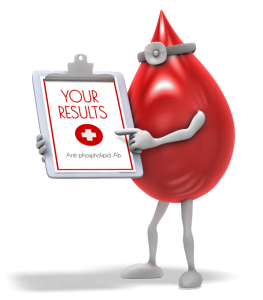22nd December 2018, Dr Chee L Khoo
Patients with active cancers are at an increased risk of DVTs and pulmonary embolism. Some patients are at higher risk than others. Thromboembolic prophylaxis could reduce that risk but is not routinely recommended in practice guidelines because the absolute risk is modest and of course, there are potential major bleeding risk. With the introduction of the new oral anti-coagulants (NOACs), the equation might be different. The Khorana Risk score for thromboembolism is designed to calculate the thromboembolic risk of patients with general cancer (solid cancers and lymphomas) who are starting on chemotherapy. It has been validated to identify patients with elevated risk may help to determine who may benefit from prophylaxis. So, do the NOACs reduce the thromboembolism risk in patients with active cancer?
The Apixaban for the Prevention of Venous Thromboembolism in High-Risk Ambulatory Cancer Patients (AVERT) trial was designed to assess the efficacy of apixaban in thromboprophylaxis in ambulatory patients with cancer at intermediate-to-high risk for venous thromboembolism (Khorana score, ≥2). Patients who had a newly diagnosed cancer or progression of known cancer after complete or partial remission and who were initiating a new course of chemotherapy with a minimum treatment intent of 3 months were potentially eligible. Inclusion required a Khorana score of 2 or higher. Patients were excluded if they had conditions putting them at increased risk for clinically significant bleeding e.g hepatic disease associated with coagulopathy.
The intervention group received apixaban at a dose of 2.5 mg twice daily, and the control group received identical placebo tablets twice daily; the treatment period was 180 days. The first dose of apixaban or placebo was administered within 24 hours after the initiation of chemotherapy. After the treatment period of 180 days, patients were followed for another 30 days (without apixaban) taking the whole follow up period to 210 days.
The primary efficacy outcome was the first episode of objectively documented major venous thromboembolism (proximal deep-vein thrombosis or pulmonary embolism) within the first 180 days after randomisation. The main safety outcome was major bleeding.
The cancers
The mean age of the patients was 61 years, and the majority of patients (58.2%) were women. The most common types of primary cancer were gynaecologic (25.8%), lymphoma (25.3%), and pancreatic (13.6%). A total of 131 patients (22.8%) were using antiplatelet or nonsteroidal anti-inflammatory therapy. The number of patients with solid tumors who had metastatic disease was 73 in the apixaban group and 67 in the placebo group.
The results
From February 2014 through April 2018, a total of 574 patients underwent randomisation at 13 centres in Canada. Patients in the intervention group took apixaban for 180 days but all patients were followed up for another 30 days after apixaban was stopped. After 210 days, the a thromboembolic event occurred in 12 (4.2%) out of 288 patients on apixaban and 28 (10.2%) out of 275 patients on placebo (p<0.001). This is a relative reduction of ~60% with apixaban. If one compares the thromboembolic rate during the period when apixaban was used (treatment period), the risk reduction was even more significant – 86% reduction.
Major bleeding occurred in 10 patients (3.5%) in the apixaban group and in 5 patients (1.8%) in the placebo group i.e. a hazard ratio, 2.00. The between group difference in the rate of major bleeding complications was mainly due to higher rates of gastrointestinal bleeding, hematuria, and gynaecologic bleeding with apixaban than with placebo. There were no significant between group difference in overall survival. This probably reflects the fact that many of our patients had advanced cancer, which was the most common cause of death.
In summary, patients with active cancer are at increased risk of thromboembolism which can result in substantial morbidity and mortality. Apixaban at 2.5mg b.d can reduce the risk of thromboembolism.
Access the abstract here.
Reference:
Marc Carrier, M.D., Karim Abou‑Nassar, M.D., Ranjeeta Mallick et al. Apixaban to Prevent Venous Thromboembolism in Patients with Cancer. N Engl J Med December 4, 2018 DOI: 10.1056/NEJMoa1814468
